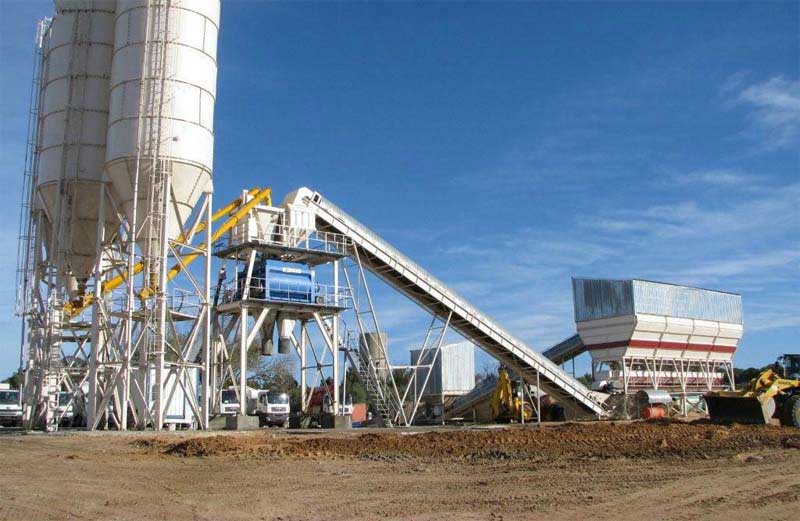
Did you know that silica is the most abundant mineral found in the earth’s crust? Other than “dirt”, it’s also found in rock, sand, graphite, coal, concrete, asphalt, brick, clay, porcelain, and even in some roofing materials, abrasives, and paints! Approximately 320,000 employees are exposed to silica in industrial settings.
When silica is contained within a natural resource or product it’s harmless. However, when it becomes airborne it can be deadly if inhaled. The danger of silica inhalation has been known for longer than you probably realize. The US Department of Labor published a video in 1938 about the hazards of silica exposure (click here to see that video). Yes, in 1938! That’s 32-years before OSHA was even founded. Recent research has linked silica to lung cancer, silicosis, chronic lung disease, and also kidney disease. If you would like to learn more about how silica affects your lungs, click here to watch a brief video.
OSHA’s first crack at establishing a silica rule for the general industry came in 1993 when they published 1910.1000 Table Z-3. In 1996 OSHA began discussing the need to revise this standard and in 2013 they published a “Notice of Proposed Rulemaking”. After a lot of research and debate, they finally published a new standard (1910.1053) on March 25, 2016. They are estimating this change to save more than 600 lives each year. While some feel this is a much-needed step toward protecting American workers, many associations have filed formal appeals due to their concern about the ability of some companies to meet the new requirements. Regardless, as of now, this rule is set to become effective on June 23, 2016. Keep in mind that states that are governed by state plans may delay the effective date 60-days, which would mean August 23, 2016. Additionally, OSHA is delaying its enforcement of the rule for industrial companies until June 23, 2018. The enforcement of engineering controls for hydraulic fracking operations will be delayed even further until June 23, 2021, since they are still in development.
While companies have some time to prepare, it’s highly recommended that effected companies begin working toward compliance now. There may be a need to change work practices and/or purchase new equipment. Implementing those changes and making those purchases over an extended period of time will help ease the burden. Especially since some of these equipment changes may require significant funding. Waiting until the last minute and purchasing all of it at once could be crippling to some companies. This is the reason OSHA has delayed the enforcement date.
So are you ready to learn about all of the new changes you will need to implement? We are sure you are “jacked”, so let’s dive in! Here is a summary to help you absorb what you need to know:
- SCOPE: The standard has an “Action Level” of 25 mg/m3, averaged over an 8-hour shift. This means that companies whose employees are not exposed to this much silica are not covered by this standard. While it’s impossible to know the exact exposure level without conducting air sampling tests, OSHA has given employers some examples of industries and tasks that may exceed this level. Those examples are concrete manufacturers, foundries, railroads, shipyards, dental laboratories, stone cutting, pottery work, and porcelain enameling.
- AIR SAMPLING: If employees perform tasks that are likely to be above the Action Level, then the employer must conduct air sampling for each task to determine the exact exposure level. OSHA’s new PEL is now 50 mg/m3 averaged over an 8-hour work shift (50% less than what it was previously).
- CONTROL MEASURES: If exposure levels are determined to be above the PEL, then companies are required to implement engineering controls to try and reduce the levels. Some examples of these controls are applying water to prevent dust from becoming airborne and/or using vacuums to keep dust out of the breathing zone. If using such controls do not lower the levels below the PEL, then respirators must be worn.
- EXPOSURE CONTROL PLAN: If employees perform tasks that are above the Action Limit the company must develop and implement a written “Silica Exposure Control Plan”. This plan must identify all tasks that involve silica exposure, the methods used to protect workers, and include each of the elements below. A formal review of the plan is required annually.
- EMPLOYEE TRAINING: All employees who are exposed above the Action Level must be trained on the hazards of silica, tasks that may involve exposure, methods used to limit exposure, description of the medical surveillance program, and how to obtain a copy of the plan.
- RESTRICTING ACCESS: Areas, where concentrations of silica exceed the PEL must be identified by posting signs at all entrances and access to these areas, shall be restricted.
- HOUSEKEEPING: Housekeeping practices that may increase exposure levels shall be avoided when alternative methods are feasible. For example, using water or vacuums to clean would be preferred over using compressed air or dry sweeping/brushing.
- MEDICAL SURVEILLANCE: Any employee who is exposed at or above the Action Level for 30 or more days per year must be entered into a medical surveillance program. This program shall consist of a chest x-ray and lung function test that shall be conducted within 30-days from the assignment. The physician must issue a written opinion at the conclusion of each exam that identifies the date of the exam, a statement that the exam met the requirements of the standard, and any recommended limitations on the employee’s use of a respirator. These tests are required to occur prior to initial use and at least once every three (3) years.
- RECORDKEEPING: All documentation associated with air sampling, exposure incidents, and medical exams for silica shall be maintained on file.
The information above gives you a brief understanding of these new changes. For a more comprehensive grasp, we recommend reading the full standard. However, here are a few additional details that may help clarify some questions you may have:
- Q1: Do the engineering controls still have to be implemented and used if they won’t reduce the exposure level under OSHA’s PEL? Yes, the employer must still use the controls in order to reduce the exposure level to the lowest amount possible.
- Q2: What if an employee performs a task that involves potential silica exposure but it’s one of OSHA’s examples of tasks or industries that are likely to involve exposure? Air monitoring must be conducted for that task.
- Q3: How often does air monitoring need to be conducted? Only once if the initial results are below the “Action Level” (as long as conditions don’t change that may increase exposure levels). If the results are above the Action Level and below the PEL, then additional monitoring must be conducted every 6-months. If the results are above the PEL, then additional monitoring must be conducted every 3-months. Monitoring can stop if two (2) subsequent tests taken 7-days to 6-months apart are both under the “Action Level”.
We hope this helps you gain your bearings and begin planning how you will implement these requirements. If you need help, let us know!

